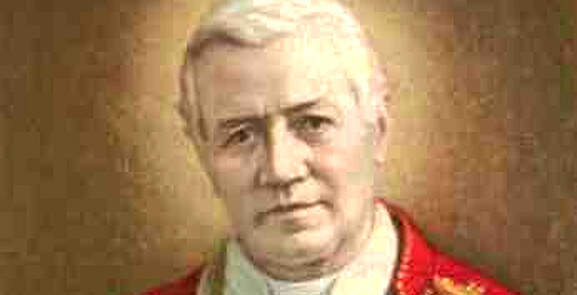
The great Pope Pius X, who ushered in the 20th century, was canonized the same year that the dogma of the Assumption of Mary was proclaimed, in 1954.
Elected Pope on August 4, 1903, he took the name Pius X and was enthroned on August 9, 1903. After he died in the Vatican on August 20, 1914, his remains were placed in a simple and unadorned tomb in the crypt below St. Peter's Basilica
on August 23, 1914. The heroicity of his virtues was proclaimed on September 3, 1950. Pius XII beatified him on June 3, 1951 and canonized him on May 29, 1954.
Pius X was a great reformer pope and the Church owes him a considerable magisterial work. First of all, he was the Pope of frequent communion: he had noticed that the sacrament of First Communion was being delayed in an abusive manner almost everywhere and lowered the age of its reception to seven.
He also wrote encyclicals on the social doctrine of the Church and founded the Pontifical Institute of Sacred Music with the motu proprio Tra Le Sollecitudini
(Instruction on Sacred Music).
The 50th anniversary of the proclamation of the Dogma of the Immaculate Conception was for him another reason to make people love the Virgin Mary: with the encyclical Ad diem illum (On the Immaculate Conception), published on February 2, 1904, Pope St. Pius X promoted true devotion to Mary and urged all the faithful to implore her protection often, in the spirit of Montfortian spirituality (i.e St. Louis-Marie Grignion de Montfort).
The Marie de Nazareth team